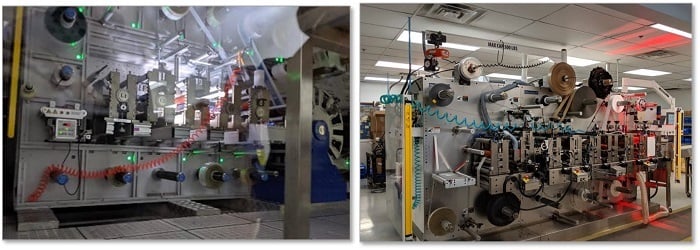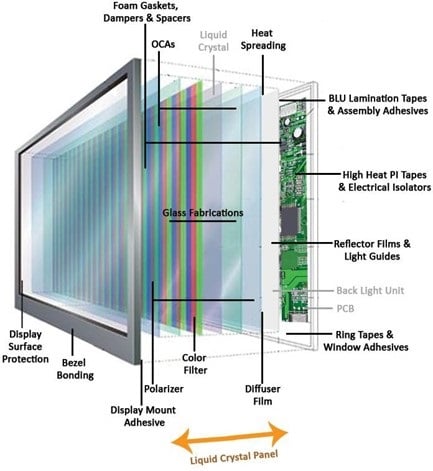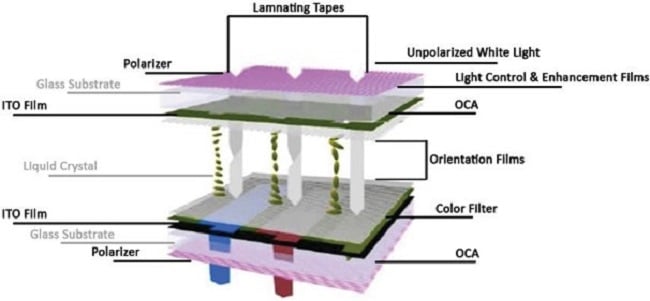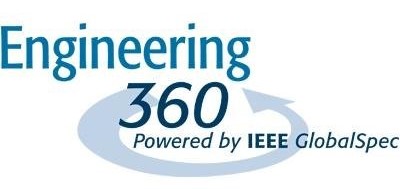Overview
Boyd Corporation has been the leading innovator in automotive and mobile display solutions since the introduction of smartphones and touch screens. In this article, Boyd leverages this experience and expertise to develop a Quick Guide to Engineered Materials and Thermal Solutions for Optimized E-mobility Displays. This article covers technologies for advanced telematics and display innovation as well integrated solutions and manufacturing processes that help OEMs reduce weight, lower total landed cost and streamline supply chain. It includes the full spectrum of solutions ideal for e-mobility advanced display applications.
Introduction
The automotive industry is quickly changing with the evolution of electric, hybrid, and autonomous vehicles as well as the increase of connectivity across the vehicle. These major market changes are prompting disruptive technologies to evolve just as quickly. This is especially noticeable with smart technologies, communications and displays. Intuitive display technology is an especially quick evolving segment as it
This guide covers engineered material and thermal solutions that help make these new technologies possible for differentiated displays that perform better, are lighter weight and more reliable.
Display applications in e-mobility
Center console/ dashboard
Displays are replacing the entire dashboard with superior navigation and improved infotainment, safety and
Dashboards no longer contain predefined dials and buttons for a limited set of vehicle features, but rather
Heads-up displays (HUD)
These displays project information as a transparent overlay on the windshield, allowing drivers to safely view data while not looking away from the road. HUD devices require streamlined, low-profile 
Smart mirrors/eMirrors /rear and side mirrors
Smart mirrors work with cameras to allow a 360o view of the vehicle, eliminating blind spots and enabling road safety and collision warnings. They can record collisions and track damage incidents as well as provide improved views for auto reverse parking.
These systems are especially helpful with larger vehicles such as semi-trucks where blind spots are a significant safety factor and a primary cause for accidents. Smart mirrors can be used both on the sides and
Why materials and thermal solutions are required
Each of these applications requires appropriate engineered material solutions to ensure that the display has the appropriate mechanical strength to withstand harsh road conditions and shock impact (noise, vibration, and harshness (NVH) — or buzz, squeak and rattle (BSR)), as well as securely staying affixed in or on the vehicle over long lifetimes. Each display requires screen protection and specialized optical films to maximize visibility and enhance readability in environments with varying light sources and levels. Each display must be waterproofed and dustproofed against unpredictable user conditions to combat contamination. Increased connectivity of newer vehicles has introduced many new electronics into a limited design space, meaning displays must also be protected against electromagnetic interference (EMI), spark voltage and dielectric crosstalk.
Electronics with increased power and processing speeds, combined with prolonged consumer usage in various environments and temperature extremes, depend upon thermal solutions to spread, block or shield heat, eliminate hot spots or conduct waste heat away from sensitive electronics. This includes graphite and material heat spreading, board level heat sinks and two phase cooling technology like vapor chambers.
By integrating multiple engineered material and thermal technologies into efficient multi-function solutions, Boyd develops thinner, lighter, better performing products with less material waste, lower landed cost and a streamlined supply chain.
Display enhancement
Displays are susceptible to many challenges that negatively impact visibility, legibility, accuracy, vivacity and usage without optimized enhancements. This can render the display useless and be dangerous for the driver. There is a wide range of specialized films that are often used together in technology stack-ups that enable improved displays with multiple functions. This includes enhancing clarity, brightness, color trueness, digital display legibility and control over the display in various environments.
Popular specialized enhancement films
Anti-glare and security films
- Reduce unsafe driving conditions by decreasing display glare and reflection, critical for automotive screens that are used in environments with varying levels and sources of both natural and artificial
Figure 6: Raw anti-glare film. Source: Boyd light.
- Control the viewable angle of LED, OLED and LCD screens with microlouvers to assure display messaging and visibility is optimized for the user. Microlouvers block light from exiting the sides of a display and direct light to the middle viewing angle, typically around 60°, to reach the viewer’s line of sight freely and optimally.
- Reduce reflection onto glass surfaces throughout the vehicle, like windshields, windows and mirrors.
- Improve contrast for liquid crystal displays (LCDs).
- Options:
- Most often on polycarbonate (PC) substrates
- Available with or without a matte hard coat
- Anti-glare films can be combined with a reflective polarizer
- Installation between the touch panel and LCD, outside of an LCD, or within the backlight of an LCD
Brightness enhancement film
- Integrate into a display backlight architecture to increase brightness, decrease weight, mitigate heat
Figure 7: Light enhancement film. Source: Boyd and improve power efficiency for displays with improved safe operation during vehicle use and a better user experience.
- Manage the angle that light is output from a backlight unit and compress light through refraction to better direct visibility to the user. Improved management of light increases the efficiency of the display and uniformity of graphics.
Reflector films
- Improve display efficiency and brightness with reflector films that integrate into a backlight unit to reflect emitted light toward the field of vision and reduce waste light directed to the sides or back of a display. 100% polymer reflector films feature no metals and will not conduct electricity or heat for improved isolated performance in thin display stacks.
- Greater than 98% reflectance across the entire visible spectrum maximizes the recycling efficiency of LCD.
Polarizer and orientation films
- Allows one polarization of light to pass through the display (i.e., horizontally traveling light) while reflecting the other polarization of light (i.e., vertically traveling light) to the backlight to recycle it for improved display vivacity and performance.
- Reflective polarizers increase light transmission through the LCD.
Display/screen protection

Optical films for long-term consumer use protect sensitive components like glass, screens and other surfaces from scratching or cracking during frequent and repeated use or touching. This includes anti-shatter and reinforcement solutions.
Optically clear adhesives and bezel bonding

These adhesives are used specifically for their superior optical and mechanical attachment qualities. OCAs have high dimensional stability, low shrinkage and resist whitening over time. Integrating layers with the right OCAs enable rugged, long lasting bonds in complex optically clear laminations. OCAs come in a variety of formulations to accommodate a broad array of
OCAs also offer ingress protection and reduce the width required for bezels to maximize screen space, better waterproofing the display, protecting it against contaminants, and creating a more immersive display experience. OCAs are often utilized with bezel bonding techniques and integrated display gaskets for high performance, ultra-tight tolerance, streamlined touch display mounts.
Display gaskets and sealing solutions
Display gaskets are flexible, resilient and most often utilized to ruggedize screens and improve durability. They absorb shock and vibration to prevent screen cracking and dust ingress while also enabling heat dissipation, and acoustic or mechanical energy damping. Gaskets also protect sensitive internal display electronics and sustain long-term optical clarity against dust, water, heat, oil or other contaminants. Combine a display gasket with thermal spreading, electrical insulation and static dissipative seals for safer, improved performance. By integrating multiple engineered material and thermal technologies into one efficient display gasket solution, Boyd develops one streamlined, multi-functional component for greater assembly efficiency and simplified sourcing complexity.
Boyd segmented frame processes
Segmented frame technology is a high precision, reel-to- reel manufacturing process that utilizes Boyd’s
Additional engineered materials available
- Diffuser and black-out films
- ITO films/electrically conductive films
- Lightguides
- Laminating tapes/BLU lamination
- Graphite heat spreading films ring tapes
- EMI films
- Foam gaskets, dampers and spacers high heat
- Polyimide tapes and electrical isolation
- Double and single-sided adhesives foam tapes
- Insulating films
Thermal management and heat spreading
The rise in display processing power, smart functionality and connectivity generates more heat. This heat can cause high touch temperatures, device overheating and failure, and degradation in accuracy and performance.
Implement heat spreading to move heat quickly and efficiently away from sensitive components, remove hotspots and prevent reaching critical temperatures. Heat spreading methods are easily integrated with engineered materials for multi-functional display systems with streamlined supply chains and lower landed costs.
Popular thermal solutions include:
Integrations and processes
By utilizing Boyd’s advanced processes and integrated solutions, engineers can increase material utilization and reduce waste cost, simplify supply chain and end device assembly, and maximize reliable display functionality for an overall total lower landed cost and enhanced consumer experience. E-mobility display applications require innovative manufacturing processes that enable extremely tight tolerances for precision assemblies, little to no waste of expensive, innovative, performance-enhancing materials, cleanroom manufacturing for foreign object debris (FOD) control and visually flawless displays, fast prototyping and design for accelerated speed to market, and high-volume, globally available production with lower overall cost.
Boyd is an expert at evaluating a full display system design to identify complementary components with the potential to be manufactured and delivered to customers in a streamlined assembly. Boyd has collapsed as many as 12 unique, individual display bill of material items into one streamlined component; helping to speed design, manufacturing and delivery cycles, improve quality and tolerance, and reduce display thickness, supply chain complexity, and logistics costs. Specialized skills and processes like this and Boyd’s segmented frame “zero gap” tolerance gaskets that reduce material waste help customers improve performance and better manage total cost.

Multiple integrated components — One pass manufacturing
Boyd’s advanced rotary die cutting is an industrial science that has refined a proprietary process to cut and assemble multiple display components that can feature a variety of raw materials and thicknesses with unique component configurations and functionality in one complex stack. Each input component is cut and introduced to the rotary production line using proprietary industrial design techniques and assembled with extremely tight tolerances in one pass through the manufacturing line. Innovation and complexity increase monthly with continuous research and development to advance what is achievable. Customers benefit from increased precision, faster turnaround, shorter lead times, higher performance, thinner displays and greater cost efficiency.
 Figure 18: Advanced rotary die cutting available globally. Source: Boyd
Figure 18: Advanced rotary die cutting available globally. Source: Boyd
Working toward lower landed costs and supply chain
Boyd has longstanding market leadership in advanced display components and a competitive advantage in display module bonding, cushioning, heat spreading, shielding and laminating optical films. Strong relationships with the world‘s leading display material innovators and numerous existing vendor codes with leading display module companies means that Boyd has established design partnerships and logistics to easily integrate into a display value chain. Boyd’s extensive material supply partnerships with the world’s leading innovators in optical films and display adhesive raw material suppliers assure the earliest and continual access to the best performing, most technically advanced raw materials globally available. Boyd is often the global preferred converting partner with these raw material innovators with relationships dating 50+ years and manufacturing processes and clean room environments optimized to handle and fabricate sensitive materials.
With IoT and the connectivity of everything, displays are now integrated into transportation, industrial automation, healthcare, appliances, smart home equipment, retail services, gaming equipment, wearables and power markets — all of which Boyd currently supports. With vast experience and innovation in display technologies as well as the new markets they are proliferating across, Boyd is uniquely positioned to help customers develop innovative display applications that provide marketable differentiation with a design velocity that accelerates speed to market.
Example product integration/stack up
Integrated displays vary based on the application and device functionality; however, many have a similar mix of materials. Below are examples of potential integrations that can be accomplished with Boyd advanced rotary manufacturing.

 Figure 20: Integrated displays vary based on the application. Source: Boyd
Figure 20: Integrated displays vary based on the application. Source: Boyd
 Figure 21: Examples of potential integrations that can be accomplished with Boyd advanced rotary manufacturing. Source: Boyd
Figure 21: Examples of potential integrations that can be accomplished with Boyd advanced rotary manufacturing. Source: Boyd
What’s next?
As the market for hybrid, fully electric and autonomous vehicles continues to expand rapidly, the needs and customer expectations for display quality and functionality will also grow extremely quickly. Design specifications will become more stringent, drivers will demand more functionality, and processing power and electronics will continue to break boundaries. Safety features communicated and presented via the display will be key to driver satisfaction and purchasing decisions. Therefore, it is vital that vehicle manufacturers stay on the forefront of display and telematic technologies.
With decades of innovation expertise, experience and supplier partnerships, coupled with the unique approach of integrating multiple technologies into a streamlined product, Boyd Corporation will continue to stay at the forefront of innovation and improved manufacturing with lower landed costs. If you are looking to solve current issues or tackle new challenges for the next generation, start by contacting Boyd Corporation to learn more about engineered materials, thermal solutions, customizations and improved processes for electric and autonomous vehicle displays.
approach of integrating multiple technologies into a streamlined product, Boyd Corporation will continue to stay at the forefront of innovation and improved manufacturing with lower landed costs. If you are looking to solve current issues or tackle new challenges for the next generation, start by contacting Boyd Corporation to learn more about engineered materials, thermal solutions, customizations and improved processes for electric and autonomous vehicle displays.
To receive more information, please visit www.boydcorp.com.

